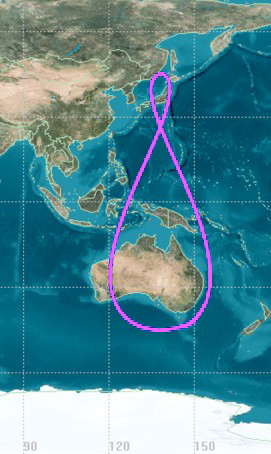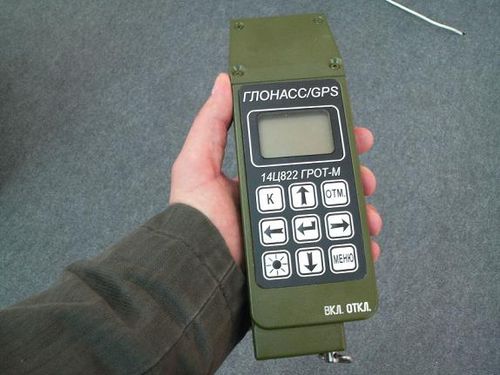|
IPhone 16e
The iPhone 16e is a smartphone developed and marketed by Apple Inc. as part of its iPhone series. It is part of the List of iPhone models, eighteenth-generation iPhone line-up, together with the iPhone 16, the IPhone 16, iPhone 16 Plus, and the Pro models iPhone 16 Pro and IPhone 16 Pro, iPhone 16 Pro Max. Announced on February 19, 2025, as part of the iPhone 16 lineup, the iPhone 16e was released with a starting price of US$599, marking a US$170 increase over the starting price of the iPhone SE (3rd generation), or a US$120 increase over the price of the comparable 128GB of storage version of that iPhone. The iPhone 16e is the entry-level model of the iPhone 16 lineup, featuring an edge-to-edge display (albeit retaining the iPhone 14's notch instead of the Dynamic Island on the iPhone 15 and 16 lines), Face ID, and a USB-C port instead of Lightning (connector), Lightning. It shares its dimensions and front design with the 2021 iPhone 13, iPhone 13 Pro, and 2022 iPhone 14. Com ... [...More Info...] [...Related Items...] OR: [Wikipedia] [Google] [Baidu] [Amazon] |
IPhone 16e Wordmark
The iPhone is a line of smartphone, smartphones developed and marketed by Apple Inc., Apple that run iOS, the company's own mobile operating system. The iPhone (1st generation), first-generation iPhone was announced by then–Apple CEO and co-founder Steve Jobs on January 9, 2007, at Macworld 2007, and launched later that year. Since then, Apple has annually released new List of iPhone models, iPhone models and IOS version history, iOS versions; the most recent models being the iPhone 16 and 16 Plus, alongside the higher-end iPhone 16 Pro and 16 Pro Max, and the lower-end iPhone 16e (which replaces the iPhone SE). As of January 1, 2024, more than 2.3 billion iPhones have been sold, making Apple the List of best-selling mobile phones#2023, largest vendor of mobile phones in 2023. The original iPhone was the first mobile phone to use multi-touch technology. Throughout History of the iPhone, its history, the iPhone has gained larger, Retina display, higher-resolution displays, ... [...More Info...] [...Related Items...] OR: [Wikipedia] [Google] [Baidu] [Amazon] |
Wi-Fi 6
Wi-Fi 6, or IEEE 802.11ax, is an IEEE standard from the Wi-Fi Alliance, for wireless networks (WLANs). It operates in the 2.4 GHz and 5 GHz bands, with an extended version, Wi-Fi 6E, that adds the 6 GHz band. It is an upgrade from Wi-Fi 5 ( IEEE 802.11ac), with improvements for better performance in crowded places. Wi-Fi 6 covers frequencies in license-exempt bands between 1 and 7.125 GHz, including the commonly used 2.4 GHz and 5 GHz, as well as the broader 6 GHz band. This standard aims to boost data speed (throughput-per-area) in crowded places like offices and malls. Though the nominal data rate is only 37% better than 802.11ac, the total network speed increases by 300%, making it more efficient and reducing latency by 75%. The quadrupling of overall throughput is made possible by a higher spectral efficiency. 802.11ax Wi-Fi has a main feature called OFDMA, similar to how cell technology works with . This brings better spectrum use, improved power control to avo ... [...More Info...] [...Related Items...] OR: [Wikipedia] [Google] [Baidu] [Amazon] |
Find My
Find My is an asset tracking service made by Apple Inc. that enables users to track the location of iOS, iPadOS, macOS, watchOS, visionOS devices, AirPods, AirTags, and a number of supported third-party accessories through a connected iCloud account. Users can also show their primary device's geographic location to others, and can view the location of others who choose to share their location. Find My was released alongside iOS 13 on September 19, 2019, merging the functions of the former Find My iPhone (known on Mac computers as Find My Mac) and Find My Friends into a single app. On watchOS, Find My is separated into three different applications: Find Devices, Find People and Find Items. After release on iOS, Find My was released on iPadOS 13.1 on September 24, 2019 and macOS 10.15 on October 7, 2019. Background The original "Find My iPhone" app was announced on June 10, 2009 and released in June 2010 alongside iPhone OS 3. At the time, it required a paid subscripti ... [...More Info...] [...Related Items...] OR: [Wikipedia] [Google] [Baidu] [Amazon] |
IP Code
The IP code or International Protection code indicates how well a device is protected against water and dust. It is defined by the International Electrotechnical Commission (IEC) under the international standard IEC 60529 which classifies and provides a guideline to the degree of protection provided by mechanical casings and electrical enclosures against intrusion, dust, accidental contact, and waterproofing, water. It is published in the European Union by the European Committee for Electrotechnical Standardization (CENELEC) as EN 60529. The standard aims to provide users more detailed information than vague marketing terms such as ''waterproof''. For example, a cellular phone rated at IP67 is "dust resistant" and can be "immersed in 1 meter of freshwater for up to 30 minutes". Similarly, an electrical socket rated IP22 is protected against insertion of fingers and will not become unsafe during a specified test in which it is exposed to vertically or nearly verti ... [...More Info...] [...Related Items...] OR: [Wikipedia] [Google] [Baidu] [Amazon] |
Indian Regional Navigation Satellite System
Indian Regional Navigation Satellite System (IRNSS), with an operational name of NavIC (acronym for Navigation with Indian Constellation; also, 'sailor' or 'navigator' in Indian languages), is an autonomous regional satellite navigation system that provides accurate real-time positioning and timing services. It covers India and a region extending around it, with plans for further extension up to . An extended service area lies between the primary service area and a rectangle area enclosed by the 30th parallel south to the 50th parallel north and the 30th meridian east to the 130th meridian east, beyond borders where some of the NavIC satellites are visible but the position is not always computable with assured accuracy. The system currently consists of a constellation of eight satellites, with two additional satellites on ground as stand-by. The constellation is in orbit as of 2018. NavIC will provide two levels of service, the "standard positioning service", which will ... [...More Info...] [...Related Items...] OR: [Wikipedia] [Google] [Baidu] [Amazon] |
BeiDou
The BeiDou Navigation Satellite System (BDS; ) is a satellite-based radio navigation system owned and operated by the China National Space Administration. It provides geolocation and time information to a BDS receiver anywhere on or near the Earth where there is an unobstructed line of sight to four or more BDS satellites. It does not require the user to transmit any data and operates independently of any telephonic or Internet reception, though these technologies can enhance the usefulness of the BDS positioning information. The current service, BeiDou-3 (third-generation BeiDou), provides full global coverage for timing and navigation, along with Russia's GLONASS, the European Galileo, and the US's GPS. It consists of satellites in three different orbits, including 24 satellites in medium-circle orbits (covering the world), 3 satellites in inclined geosynchronous orbits (covering the Asia-Pacific region), and 3 satellites in geostationary orbits (covering China). The BeiDo ... [...More Info...] [...Related Items...] OR: [Wikipedia] [Google] [Baidu] [Amazon] |
Quasi-Zenith Satellite System
The , also known as , is a four-satellite regional satellite navigation system and a GNSS augmentation#Satellite-based augmentation system, satellite-based augmentation system developed by the Japanese government to enhance the United States-operated Global Positioning System (GPS) in the Asia-Pacific, Asia-Oceania regions, with a focus on Japan. The goal of QZSS is to provide highly precise and stable positioning services in the Asia-Oceania region, compatible with GPS. Four-satellite QZSS services were available on a trial basis as of 12 January 2018, and officially started on 1 November 2018. A satellite navigation system independent of GPS is planned for 2023 with seven satellites. In May 2023 it was announced that the system would expand to eleven satellites. History In 2002, the Japanese government authorized the development of QZSS, as a three-satellite regional time transfer system and a GNSS augmentation#SatelliteBasedAugmentationSystem, satellite-based augmentatio ... [...More Info...] [...Related Items...] OR: [Wikipedia] [Google] [Baidu] [Amazon] |
Galileo (satellite Navigation)
Galileo is a satellite navigation, global navigation satellite system (GNSS) created by the European Union through the European Space Agency (ESA) and operated by the European Union Agency for the Space Programme (EUSPA). It is headquartered in Prague, Czech Republic, Czechia, with two ground operations centres in Oberpfaffenhofen, Germany (mostly responsible for the control of the satellites), and in Fucine Lake, Fucino, Italy (mostly responsible for providing the navigation data). The €10 billion project began offering limited services in 2016. It is named after the Italian astronomer Galileo Galilei. One of the aims of Galileo is to provide an independent high-precision positioning system so European political and military authorities do not have to rely on the United States Global Positioning System, GPS or the Russian GLONASS systems, which could be disabled or degraded by their operators at any time. The use of basic (lower-precision) Galileo services is free and open ... [...More Info...] [...Related Items...] OR: [Wikipedia] [Google] [Baidu] [Amazon] |
GLONASS
GLONASS (, ; ) is a Russian satellite navigation system operating as part of a radionavigation-satellite service. It provides an alternative to Global Positioning System (GPS) and is the second navigational system in operation with global coverage and of comparable precision. Satellite navigation devices supporting both GPS and GLONASS have more satellites available, meaning positions can be fixed more quickly and accurately, especially in built-up areas where buildings may obscure the view to some satellites. Owing to its higher orbital inclination, GLONASS supplementation of GPS systems also improves positioning in high latitudes (near the poles). Development of GLONASS began in the Soviet Union in 1976. Beginning on 12 October 1982, numerous rocket launches added satellites to the system until the completion of the Satellite constellation, constellation in 1995. In 2001, after a decline in capacity during the late 1990s, the restoration of the system was made a government p ... [...More Info...] [...Related Items...] OR: [Wikipedia] [Google] [Baidu] [Amazon] |
Global Positioning System
The Global Positioning System (GPS) is a satellite-based hyperbolic navigation system owned by the United States Space Force and operated by Mission Delta 31. It is one of the global navigation satellite systems (GNSS) that provide geolocation and time information to a GPS receiver anywhere on or near the Earth where there is an unobstructed line of sight to four or more GPS satellites. It does not require the user to transmit any data, and operates independently of any telephone or Internet reception, though these technologies can enhance the usefulness of the GPS positioning information. It provides critical positioning capabilities to military, civil, and commercial users around the world. Although the United States government created, controls, and maintains the GPS system, it is freely accessible to anyone with a GPS receiver. Overview The GPS project was started by the U.S. Department of Defense in 1973. The first prototype spacecraft was launched in 1978 an ... [...More Info...] [...Related Items...] OR: [Wikipedia] [Google] [Baidu] [Amazon] |
USB-C
USB-C, or USB Type-C, is a 24-pin reversible Electrical connector, connector (not a Communication protocol, protocol) that supersedes previous USB hardware#Connectors, USB connectors (also supersedes Mini DisplayPort and Lightning (connector), Lightning connectors) that can transfer data, e.g. audio/video data, to connect to monitors, external drives, mobile phones, keyboards/mouses, and many more peripheral devices; sometimes indirectly via hubs/docking stations. It also exchanges electricity, in general to power peripheral devices. It is used not only by USB technology, but also by other data transfer protocols, including Thunderbolt (interface), Thunderbolt, PCIe, HDMI, DisplayPort, and others. It is Extensibility, extensible to support future protocols. The design for the USB-C connector was initially developed in 2012 by Intel, HP Inc., Microsoft, and the USB Implementers Forum. The Type-C Specification 1.0 was published by the USB Implementers Forum (USB-IF) on August 11 ... [...More Info...] [...Related Items...] OR: [Wikipedia] [Google] [Baidu] [Amazon] |
Near-field Communication
Near-field communication (NFC) is a set of communication protocols that enables communication between two electronic devices over a distance of or less. NFC offers a low-speed connection through a simple setup that can be used for the bootstrapping of capable wireless connections. Like other proximity card technologies, NFC is based on inductive coupling between two electromagnetic coils present on a NFC-enabled device such as a smartphone. NFC communicating in one or both directions uses a frequency of 13.56 MHz in the globally available unlicensed radio frequency ISM band, compliant with the ISO/IEC 18000-3 air interface standard at data rates ranging from 106 to 848 kbit/s. The NFC Forum has helped define and promote the technology, setting standards for certifying device compliance. Secure communications are available by applying encryption algorithms as is done for credit cards and if they fit the criteria for being considered a personal area network. ... [...More Info...] [...Related Items...] OR: [Wikipedia] [Google] [Baidu] [Amazon] |








